Kyushu’s Seven Stars: a journey to remember
Japan’s earliest luxury overnight train shows no signs of slowing down after 12 years
BY THE TIME THE SEVEN Stars in Kyushu rumbles into its third station, we’re starting to feel like Shohei Ohtani on a home visit. At each stop, a camera-clutching crowd greets our arrival, while onlookers wave excitedly from the side of the tracks.
The truth is, nobody’s there for us – or Ohtani. They’ve all come for a glimpse of the dashing burgundy and gold train we’re on: Japan’s first luxury overnight sleeper, named after the seven prefectures in the country’s volcano-speckled, beach-rimmed main southern island.
Even though it’s been running since 2013 and its cabins are eye-wateringly expensive (upwards of 680,000 yen, or about S$5,900, for a 2D1N itinerary, twin-share), this legendary locomotive that CNN calls the “world’s most luxurious” remains wildly popular.
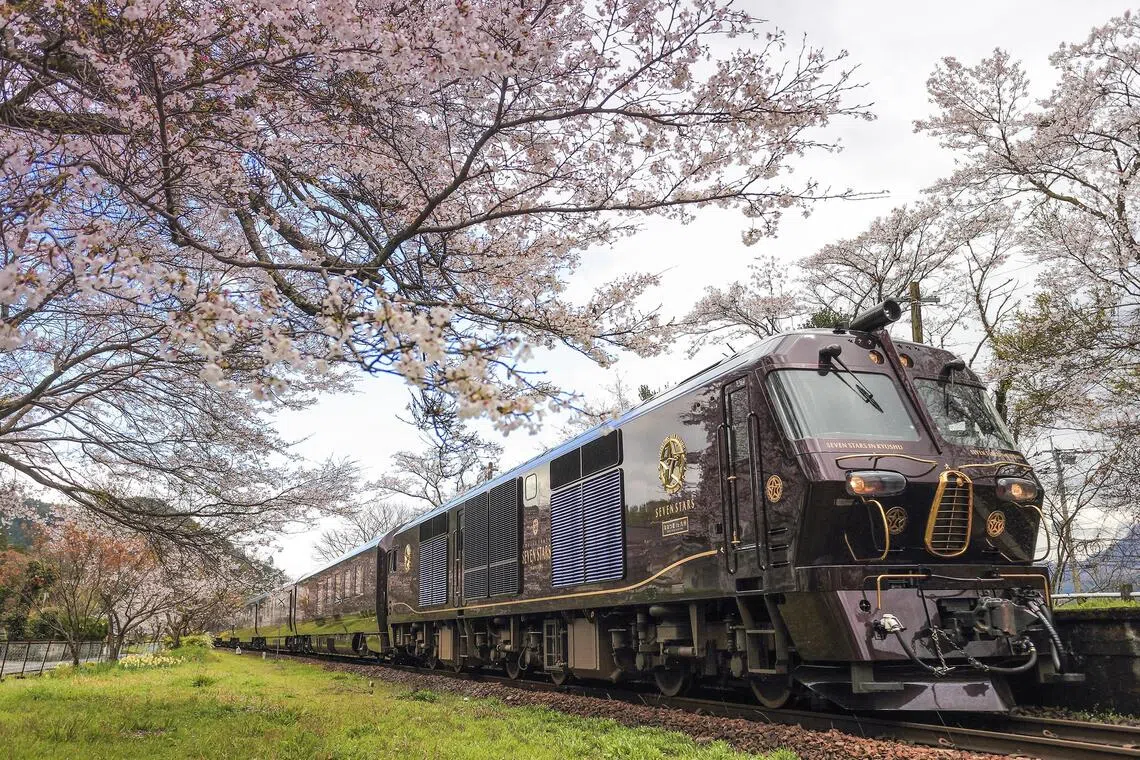
It’s so in demand that it has almost never seen an empty cabin; most passengers have to take part in a lottery for tickets, which are released months ahead of the Seven Stars’ spring-autumn and autumn-winter seasons.
For those in the know, however, there’s a loophole: A handful of private tour operators, including Cruiselect and Japan Private Tour, have a standing reservation with the train, meaning that it’s possible to guarantee your place by booking through them without the drama of having to go through the lottery.
The catch is that you have to buy the trip as a package that includes a night in a hotel before and after the train journey.
A grand send-off
It’s on one of these guaranteed tickets that we arrive in Fukuoka in April on a quest to experience the fabled train. Our 4D3N itinerary will take us on a journey to visit some of Kyushu’s most storied pottery houses and artisans, as well as taste the island’s best produce via a bevy of guest chefs from top restaurants.
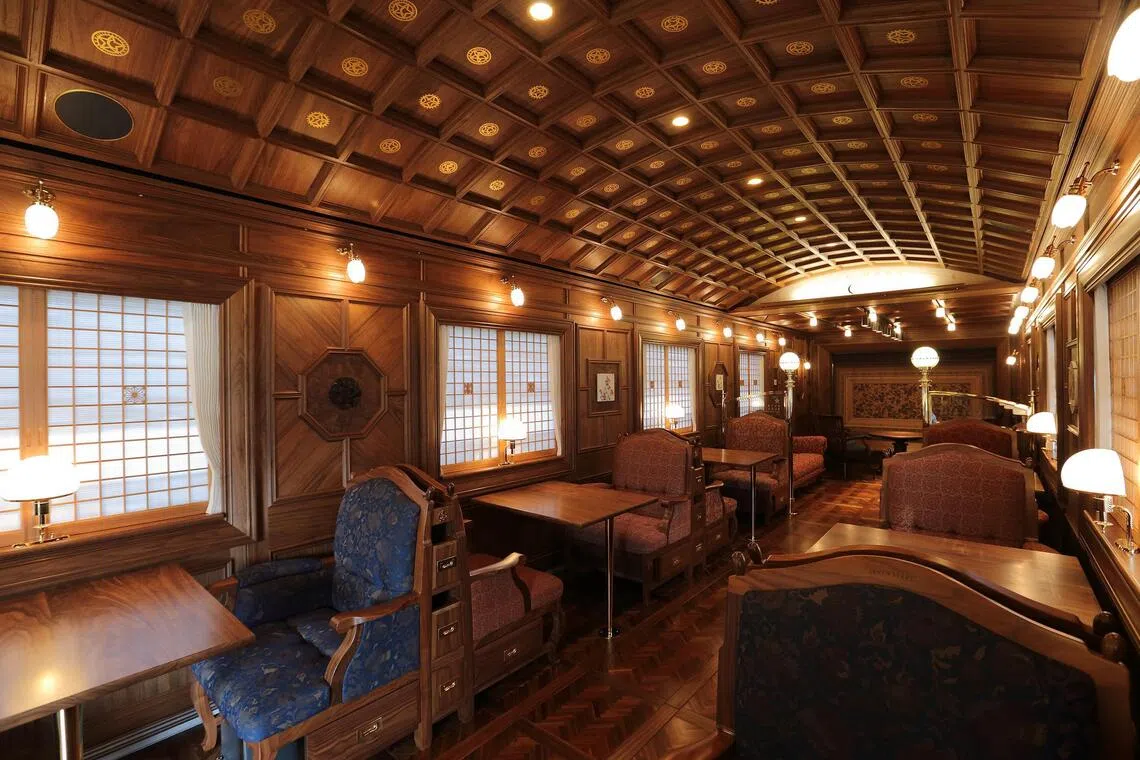
At the jewel-box-like Seven Stars departure lounge in Hakata Station, champagne and impeccably made pastries set the stage for our time ahead. Over the next few days, we’ll carve through 1,116 km of track in northern and central Kyushu, spend a night in a famous ryokan, and have our every ask (from oat milk to cooler bags) conjured up by our gentle butler: a waistcoated, petite young lady named Maya.
But first, boarding. At 10.38 am, the locomotive pulls into the station. The sight of its stately carriages – that pop in contrast to the grey passenger trains around us – elicits a thrilled murmur from the platform, and there’s a very polite Japanese rush to the side of the train for photos.
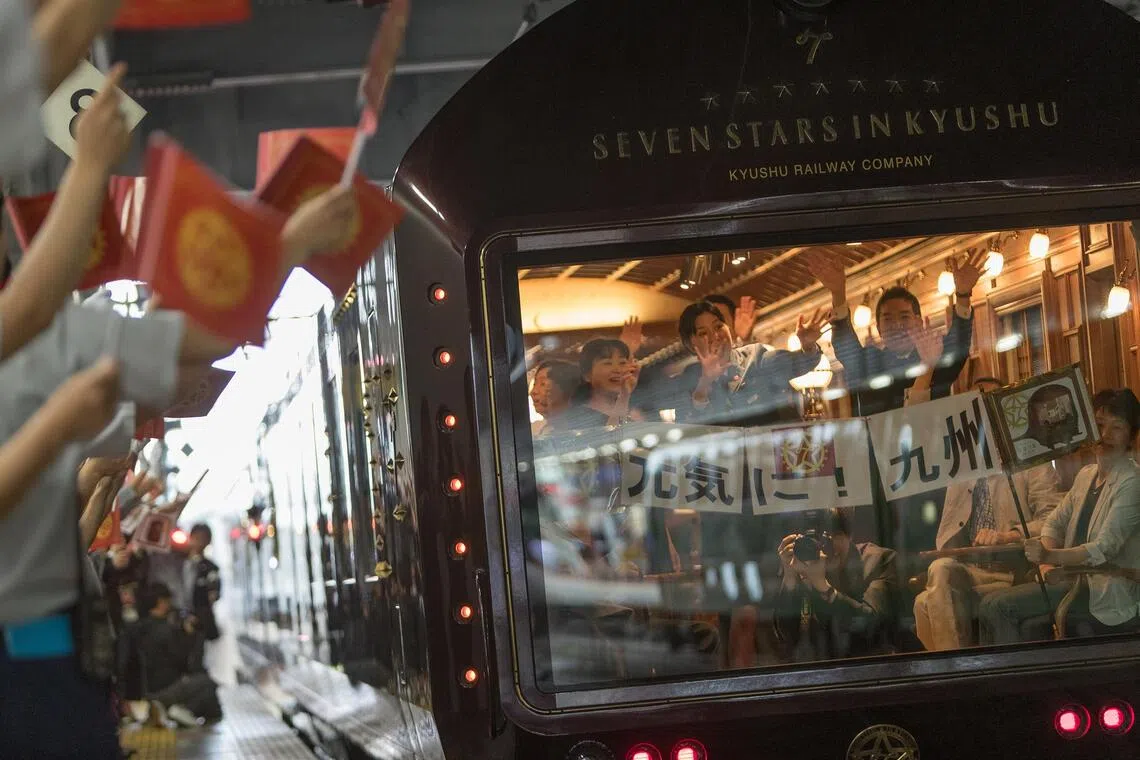
Precisely 20 minutes later, we’re on our way, the landscape outside the large picture windows softening quickly from Fukuoka’s boxy, utilitarian city skyline to lone farmhouses and emerald rice fields, marking our entry into a different realm.
Rare experiences
It’s drizzling when we embark on our first excursion to the remote pottery village of Onta, one of Japan’s Important National Intangible Cultural Properties. But that doesn’t dampen the specialness of the visit.
Under the shelter of enormous umbrellas provided by the crew, we ramble through this rarely accessed community nestled in the gullies of forested slopes.
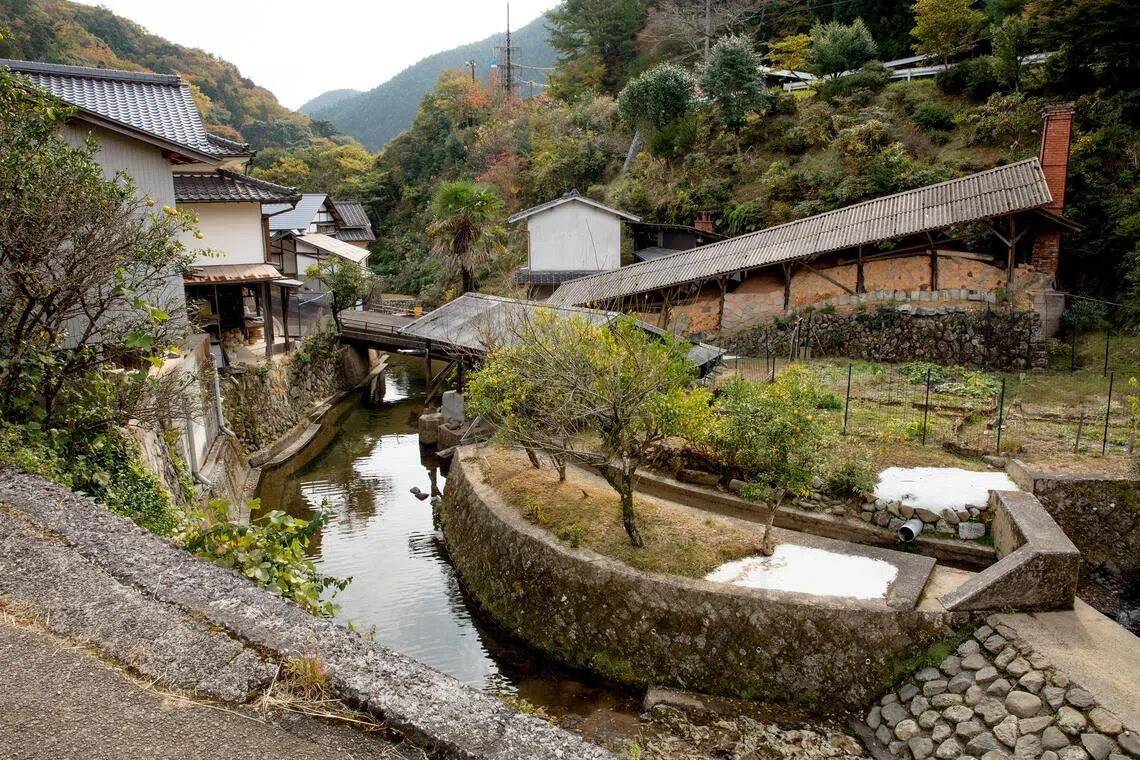
Founded by potters some 300 years ago, the families who live in Onta use only rocks sourced from the mountains for clay, pounding it into powder with ancient hydro-powered wooden kara-usu instruments.
The intricately patterned and glazed everyday ceramics that are eventually produced from this laborious work are stamped not with their individual makers’ names, but the collective brand of the village – a lesson in the power of working together to create something more significant than the sum of all parts.
By the next day, we’re in Saga prefecture, one of the main hubs for potters during the Edo period because of its supply of rich porcelain clay. At Chin Jukan Kiln, one of Japan’s most recognised ceramics makers, we’re greeted by the 15th-generation head of the family and taken on a tour of the premises, which includes a museum with pieces that are so incredibly intricate, they look more like woven fabrics.
The kiln is famous for its shiro satsuma – porcelain ware with a pure, milky white glaze – and in its workshops we get to observe artists tooling designs that will be sent to Japan’s high-end department stores for sale.
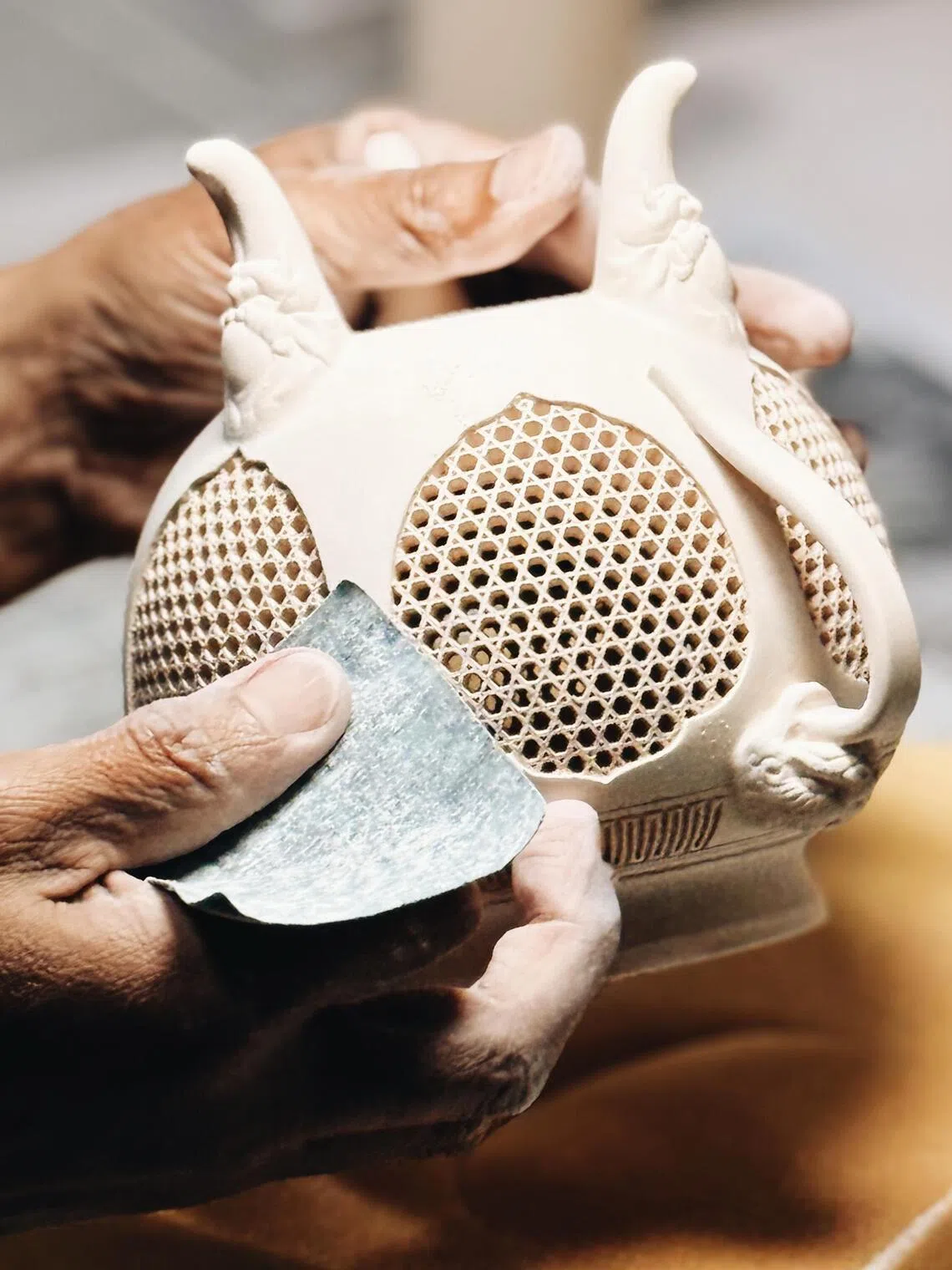
Though perhaps not for long. “There aren’t many people who want to learn any more,” shares our guide and veteran craftsman Naoaki Kodama. Witnessing both the birth of new work and the death of a trade at the same time proves bittersweet.
Inner beauty
Of course, the commitment to craft extends to the on-board experience too.
The Seven Stars was completely renovated in October 2022, with everything – from the antique Arita hand-painted sinks and fragrant hinoki wood showers in our cabin, to the beautiful, tiny bronze insect sculptures that dot the corridors and the glossy chessboard wooden floors – handmade by Japanese artisans.
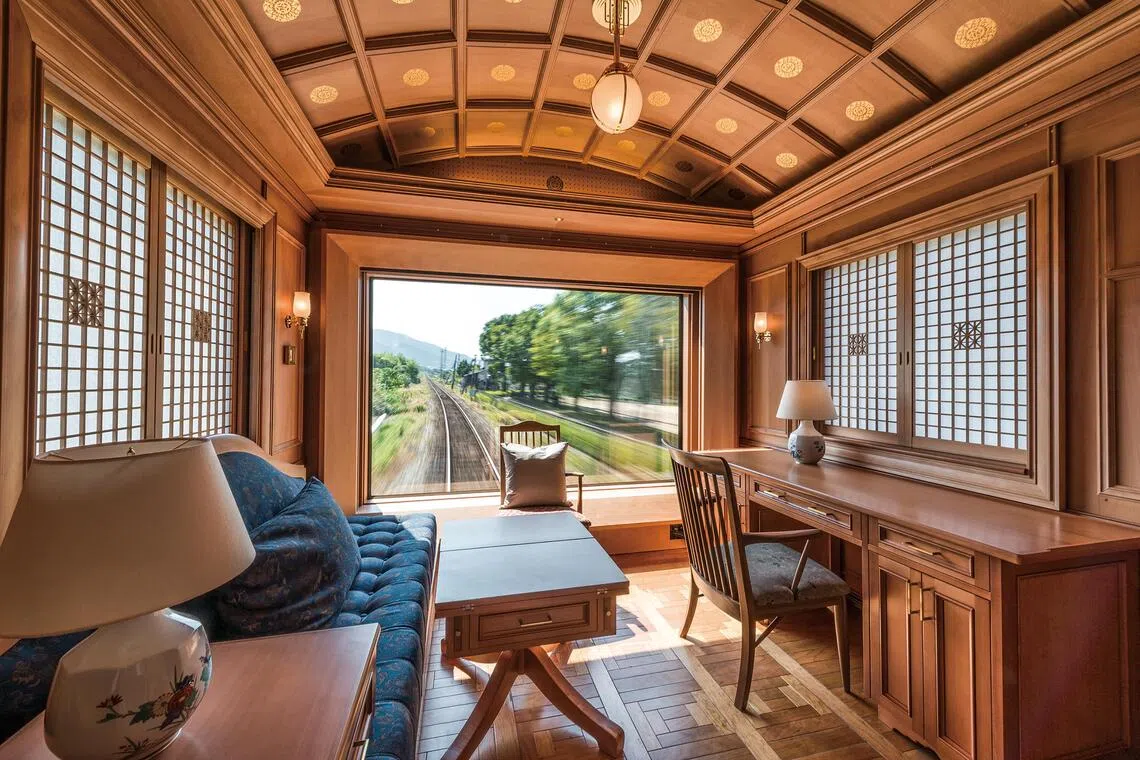
It’s all quietly tasteful and more than a little whimsical; there’s always a delightfully quirky detail wherever you look.
Then there’s the food, a showcase of both the skill of Kyushu’s chefs and the region’s produce.
One day, we dine on sweet Matsuba crab lifted with Tosa vinegar from the team behind the 11-seat, two-Michelin-starred Imoto in Fukuoka, where it’s notoriously hard to get a reservation.
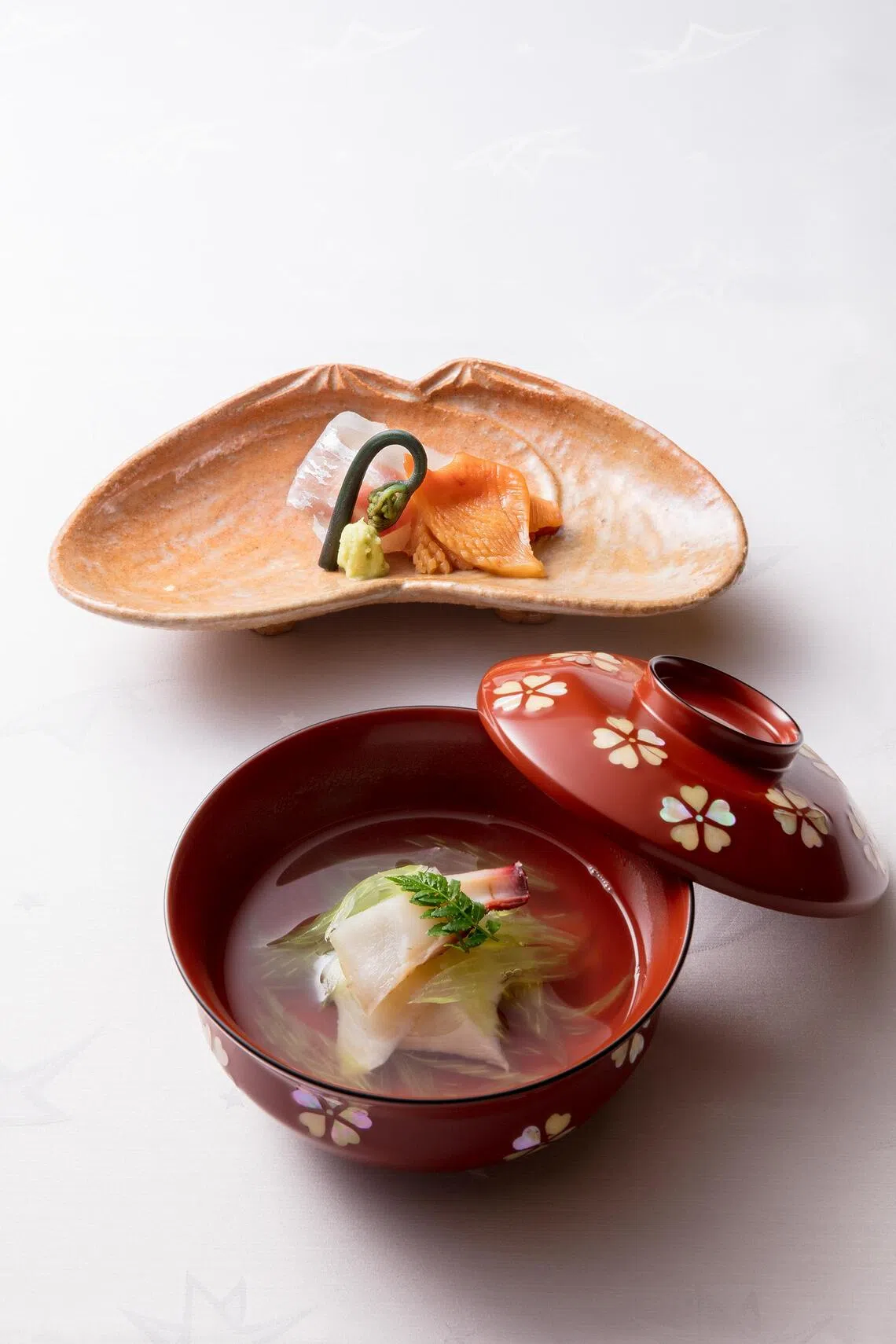
The meal is magnificent, but it’s not even the highlight in a succession of fine feasts; that honour goes to the final evening’s dinner of in-season flounder, kumquats, sweet kuruma prawns and sea urchin by Cerca Trova, an under-the-radar Italian restaurant in the tiny town of Nobeoka.
The art of hospitality
We spend the penultimate night at the serene Myoken Ishiharaso in the Kirishima Onsen area. Known for its restorative hot springs and Michelin-recommended restaurant, it’s a rather welcome break from the train’s plush but narrow bed and clackety rocking.
Rising refreshed on our last morning, we’re whisked to Fukoji Temple – carved deep into the mountains in the city of Bungo-Ono. Historically a training ground for esoteric Buddhist practices, the temple boasts one of the largest magaibutsu (Buddha statue carved into a rock surface) in Japan.
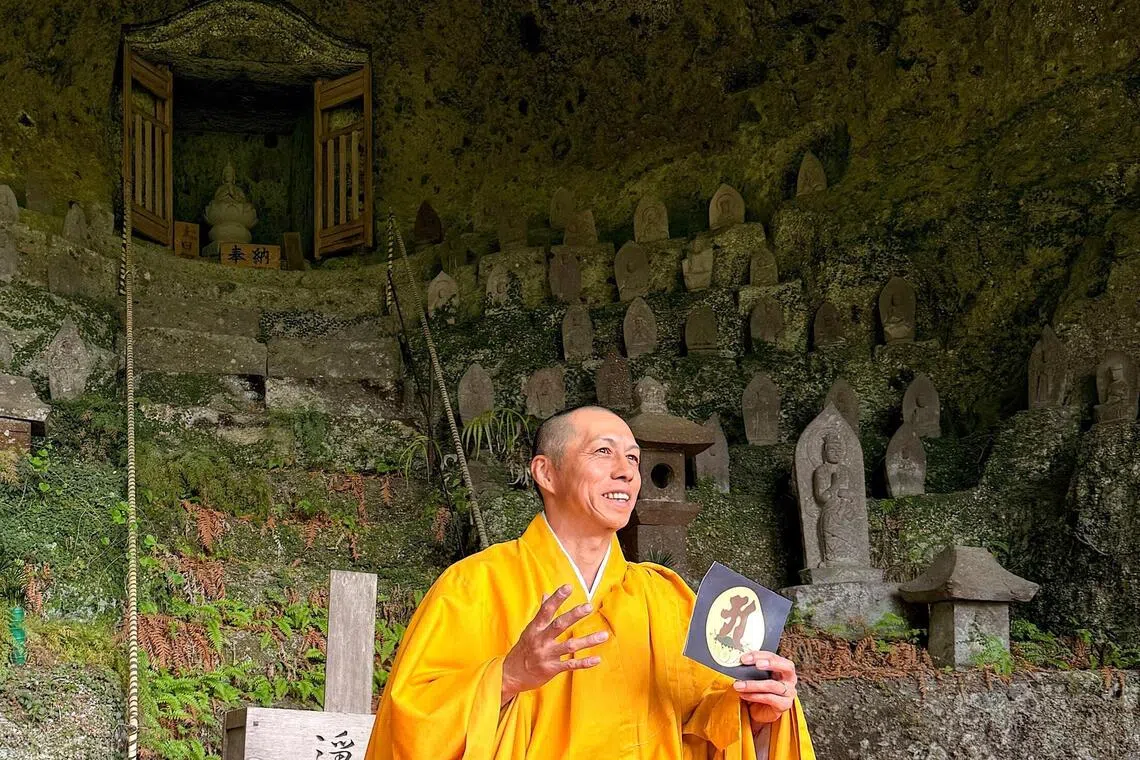
But admiring the colossal work isn’t the only thing we’re here for. On an open-air platform perched at the mouth of a cave on a cliff, the temple’s chief priest takes us through a meditation session, interrupted only by the sound of birdsong and wind rustling through the surrounding forest.
The Seven Stars’ parting gift before we pull into Hakata Station is an elegant farewell soiree accompanied by live piano and violin music. During the session, the staff play a video in which they’ve captured every passenger and experience we’ve shared together.
Even though they must surely find it routine – the train runs twice a week through most of the year – the video content and the crew’s goodbyes are tangibly heartfelt. “No matter how many times we go through it, this is always the difficult part,” train manager Yoshihiro Shiojama tells us.
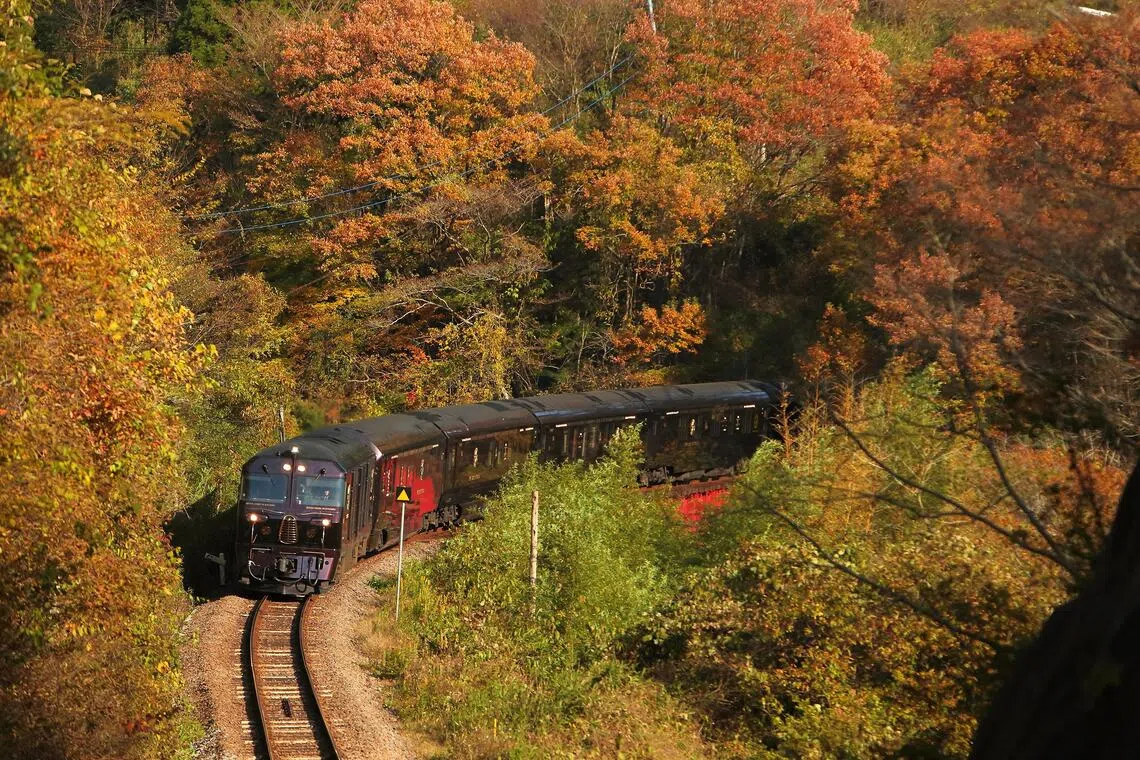
It’s said that the human mind measures life not by time, but in memorable moments. And that probably explains the long-running success of the Seven Stars.
While a journey on this luxury sleeper is remarkably time-efficient, its artfully considered experiences and genuine hospitality have a way of staying steeped in memory, long after you’ve stepped off the train.
The writer was a guest of Cruiselect
Decoding Asia newsletter: your guide to navigating Asia in a new global order. Sign up here to get Decoding Asia newsletter. Delivered to your inbox. Free.
Copyright SPH Media. All rights reserved.



